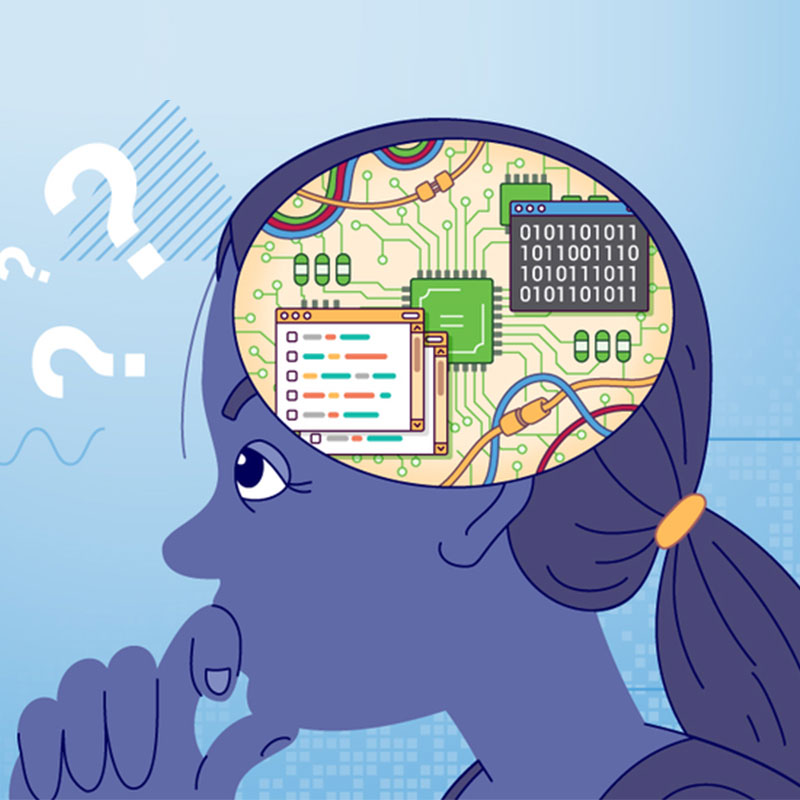Importance of Computational Thinking for School Students
As our world becomes more interconnected and moves towards a digital economy, new age skills like computational thinking will be essential to support new ways of working and engaging with technology to fuel innovative services, solutions, and tools.
It is imperative that educational institutions focus on incorporating computational thinking into curriculums for grades K-12 to prepare students for the digital future.
Understanding Computational Thinking
Computational thinking is a systematic approach towards solving a complicated problem by breaking it down into smaller, simpler steps in a way that it can be executed by a computer/machine.
Solving a problem in a way that a computer can execute the process is important because it means that the solution can be applied towards similar problems in other scenarios.
Computational thinking helps in embracing a creative and adaptable mindset to work through problems and potential solutions efficiently, and using and interpreting data effectively.
Computational Thinking in the Classroom
Develops problem-solving skills
Computational thinking is a structured and proven method designed to identify problems; it is made up of four parts which include:
- Decomposition: breaking down a complex problem into smaller, more manageable parts
- Pattern Recognition: looking for similarities among and within problems
- Abstraction: focusing on the important information only, ignoring irrelevant details
- Algorithms: developing a step-by-step solution to solve the problem
Project-based learning activities in courses like App Design, Game Design, Web Design, 3D Design, Robotics etc. encourage students to practise computational thinking to solve the given problem.
Enhances innovation skills
As mentioned above, one of the parts of computational thinking is abstraction. While working on projects, students need to determine what to extract from a problem to create a solution; they are forced to think differently about the most important elements of what they are working with and remove irrelevant factors. After doing this, they can focus on the skills, tools, and resources available with them to create new innovative solutions.
Strengthens coding skills
Computers are good at doing repetitive tasks with accuracy. But the only way, they can do these tasks is when somebody specifically instructs them what to do and how to do it. In computational thinking, this process is called algorithmic design.
When students use languages such as Scratch (for a Game Design course) or Python (for a Coding course) – it builds their coding skills as they create computer instructions which make computers and machines do things, which they previously couldn’t do.
ICT 360 in alignment with NEP, provides ICT curriculum with ready-to-use content, design and computational thinking approach to projects as well as interdisciplinary learning material on an online platform that caters to today’s relevant technologies and future skills requirements. It is designed to help teachers improve their instructional practices with 21st century teaching skills through train-the-teacher program, build a strong foundation to empower students with the ability and skills to design & create amazing things on their own in a fun & engaging environment, excel in academics and prepare them to be industry- and career-ready.
With 50+ partner schools across India, it aims to empower students with creativity, problem-solving, design and tech skills from an early age. These skills are essential for future job roles like Graphic Designers, AI & ML Specialists, Software & Applications Developers, Animators, Robotics Engineers, Data Analysts, and IOT Specialists.

